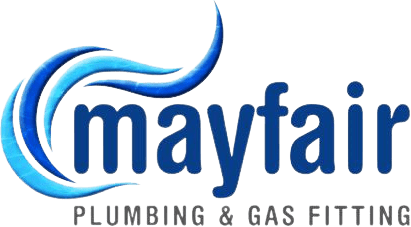Repairing & Installation Of Gas Pipes
In South Australia we are very fortunate to a have access to gas whether it be natural or propane there is various options depending on your geographical location. The demand your home or business has for gas will also impact on the type of the regulator, meter, bottles and size of pipes installed. Our gas plumbers are here to help.
It was back in 2010 many of the suburbs within a 15-kilometre radius of the CBD started getting upgraded gas pipe lines in the street and the project is still being rolled out today in 2018 to many various suburbs in the state such as North Adelaide, Daw Park and Fullarton which have old steel low pressure natural gas lines in the street. The reason for the upgrades is that many of the old steel and cast-iron pipes have developed leaks over the years and demand placed upon the supply from the infrastructure has also increased with our growing population.
New Pipe Work
The new pipe work which is now being installed is a polyethylene product commonly know amongst the industry as “Tiger Pipe”, the reason for its name is due to the colouring of the pipe itself, black with yellow stripes. The reason that the new material was chosen for the upgrade projects across the state is that it can be inserted into the existing cast iron pipes and installed through eliminating the need for the entire pipe line to be excavated. Where each branch or tee piece occurs, a localised hole in the ground is made to enable this connection, but most of the upgrades can be performed with minimal disruptions to the surface. After the new tee piece or branch is made the ground above will be either re-bituminised or paved over
Gas relies upon flow to work at is optimal performance and with the newly installed tiger pipe the internal diameter of pipe work has been reduced so it can fit inside the old steel pipes underground. To over come the problem of reduced flow due to the reduced diameter the pressure inside of the new gas lines has been increased. You will now see that all properties which have had the infrastructure in the street upgraded will now have a high-pressure regulator installed at the gas meter on the incoming leg after the isolation valve. The reason for high pressure regulator is that the existing pipe work inside the boundary (consumer mains) and its appliances are only rated to a maximum static pressure of 3.5kpa (domestic properties).
When the gas is temporarily turned off to homes and properties to enable the new line to be connected a test for soundness then needs to be performed on the consumer pipe work before any gas can be reinstated to property. Unfortunately for many of the properties their pipe work has also developed leaks over the many years of being in the ground. If a leak is discovered the consumers gas cannot be reinstated until the leak is identified and fixed.
What To Do When You Have A Gas Leak
When a suspected gas leak is reported to our office there are a few points which we discuss with our clients before any work will be completed at the property:
- Our service technicians will attend the property and firstly confirm that there is an actual leak.
- We will then secondly isolate all appliances from the consumer pipe work and retest the service to confirm there is still a leak present.
- If a leak is still presenting, we will then proceed to test any exposed sections of pipe work for leaks at the joints and mechanical connections.
- After this has also been eliminated we will try to separate the underground pipe work from the above ground sections of gas lines and prove which section has the leak in it. In majority of the cases the leak is in the underground pipe line due to its exposure to the elements of the ground for many years some over 50 years in age.
Once the location of a gas leak has been narrowed down a plan can be put in place to have the pipe work replaced. Today the majority of consumer pipe work from the meter to the building is commonly installed in copper tube (class A and class B). The length of the run from the gas meter to the building is on average around 20 metres for majority of the domestic properties in South Australia. The size of the copper pipes and fittings used for a new gas main from the meter to the building range from 25mm (1inch) through to 50mm (2inch), the more fixtures on the property will dictate a larger pipe size i.e. 50mm.
Method Of Repairs
Our preferred method of joining new and existing copper pipes today is using a process called pressing. By moving forward with the technological advances in the plumbing industry and adopting this process makes us the market leader in the plumbing sector and offers big benefits to our clients. We are firstly reducing the chance of a leak during the installation processes and secondly more then halving the labour hours required to install the pipe work. Today there are approximately 5 manufacturers whom produce this type of copper and brass product which ranges from 15mm all the way up to 100mm but the more common brand and the first one to introduce the product to the Adelaide market was a German company called Viega (see video). Once you have purchased the required tools to assemble the fittings it is a very simple process and just about 100% guaranteed not to leak if installed to the manufacturers specifications.
Today Mayfair Plumbing and Gasfitting are leading the way into the future of the plumbing and gas industry with developed skills and methods that allow us to install gas pipe work to high standards for any scenario both our commercial, industrial and domestic clientele. Whether the pipe work be high pressure or low pressure we are trained in all elements of pipe work installation and appliance maintenance. Our proven ability to service customers in metropolitan Adelaide including the CBD and further afield locations such as Whyalla, Mount Gambier, Kangaroo Island and Port Lincoln makes us stand out from our competitors.

